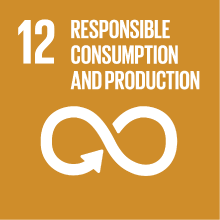INORGANIC CHEMISTRY
- Academic year
- 2020/2021 Syllabus of previous years
- Official course title
- CHIMICA INORGANICA
- Course code
- CT0531 (AF:315518 AR:169338)
- Teaching language
- Italian
- Modality
- On campus classes
- ECTS credits
- 6
- Degree level
- Bachelor's Degree Programme
- Academic Discipline
- CHIM/03
- Period
- 2nd Semester
- Course year
- 2
- Moodle
- Go to Moodle page
Contribution of the course to the overall degree programme goals
The specific training objective of the course is to provide knowledge of inorganic chemistry related to atomic and molecular structure and bonding, and to the systematic of the s- and p-block elements. Therefore, the course aims on the one hand to complete and integrate some of the basic concepts examined in the General Chemistry course, on the other to offer to the students modern methodological tools, especially on the structural aspects and on the structure-property relationships of the s- and p-block elements and their compounds, with a focus on the various aspects of sustainability.
Expected learning outcomes
(I) Knowledge of the theories of atomic and molecular structure.
(II) Knowledge of the general trends of the elements within the periodic table.
(III) Knowledge of the main characteristics and reactivity of the s- and p-block elements.
2. Ability to apply knowledge and understanding
(I) Ability to use the laws and the chemical concepts learned to solve theoretical and practical problems in a logical and deductive way.
(II) Ability to use the periodic trends to predict the properties of the compounds of a specific element.
3. Ability to judge
(I) Ability to predict the relative stability within the same class of compounds.
(II) Ability to predict the structure and reactivity of inorganic compounds of the s and p blocks.
(III) Ability to recognize the sustainability aspects of the chemistry of the s- and p-block elements.
4. Communication skills
(I) Ability to communicate the concepts learned and the result of their application using appropriate terminology, both in oral and written forms.
(II) Ability to interact with the teacher and with the classmates in a respectful and constructive way.
5. Learning skills
Ability to take notes, select and collect information according to specific importance and priority.
Pre-requirements
Contents
(I) Revision and in-depth analysis of atomic and molecular structure: the origin of elements, nucleosynthesis, hydrogen atom, polyelectronic atoms.
(II) The Periodic Table: structure and periodic properties of elements, essential elements for life.
(III) Molecular structure and bonding: molecular orbital theory, homonuclear and heteronuclear diatomic molecules, polyatomic molecules, structure and properties of bonds. Metallic bonding and alloys. Ionic bonding and structures of solids.
(IV) Descriptive and systematic chemistry of the s- and p-block elements with specific focus on the various aspects of sustainability and in-depth analysis of selected technological features.
Referral texts
• Rayner-Canham G., Overton T., Chimica Inorganica Descrittiva, Edises, 2017.
• Miessler G.L., Tarr D.A., Chimica Inorganica, Piccin, ISBN 978-88-299-2096-9.
• Shriver D.F., Atkins P.W., Inorganic Chemistry (4th or 5th edition), Oxford.
• Cotton F.A., Wilkinson G., Gaus P.L., Basic Inorganic Chemistry, Wiley, ISBN 978-0-471-50532-7.
Assessment methods
Mid-term written tests (participation is not compulsory) are foreseen. Details will be provided during the classes.
Type of exam
Teaching methods
• lectures;
• transversal learning. The students, divided into groups of 3-5 people, will have to present to the class a topic assigned by the teacher.
Further information
Accommodation and support services for students with disabilities and students with specific learning impairments:
Ca’ Foscari abides by Italian Law (Law 17/1999; Law 170/2010) regarding support
services and accommodation available to students with disabilities. This includes students with mobility, visual, hearing and other disabilities (Law 17/1999), and specific learning impairments (Law 170/2010). In the case of disability or impairment that requires accommodations (i.e., alternate testing, readers, note takers or interpreters) please contact the Disability and Accessibility Offices in Student Services: disabilita@unive.it.
THE STRUCTURE AND CONTENT OF THE COURSE MAY CHANGE DUE TO THE COVID-19 EPIDEMIC.
2030 Agenda for Sustainable Development Goals
This subject deals with topics related to the macro-area "Circular economy, innovation, work" and contributes to the achievement of one or more goals of U. N. Agenda for Sustainable Development


